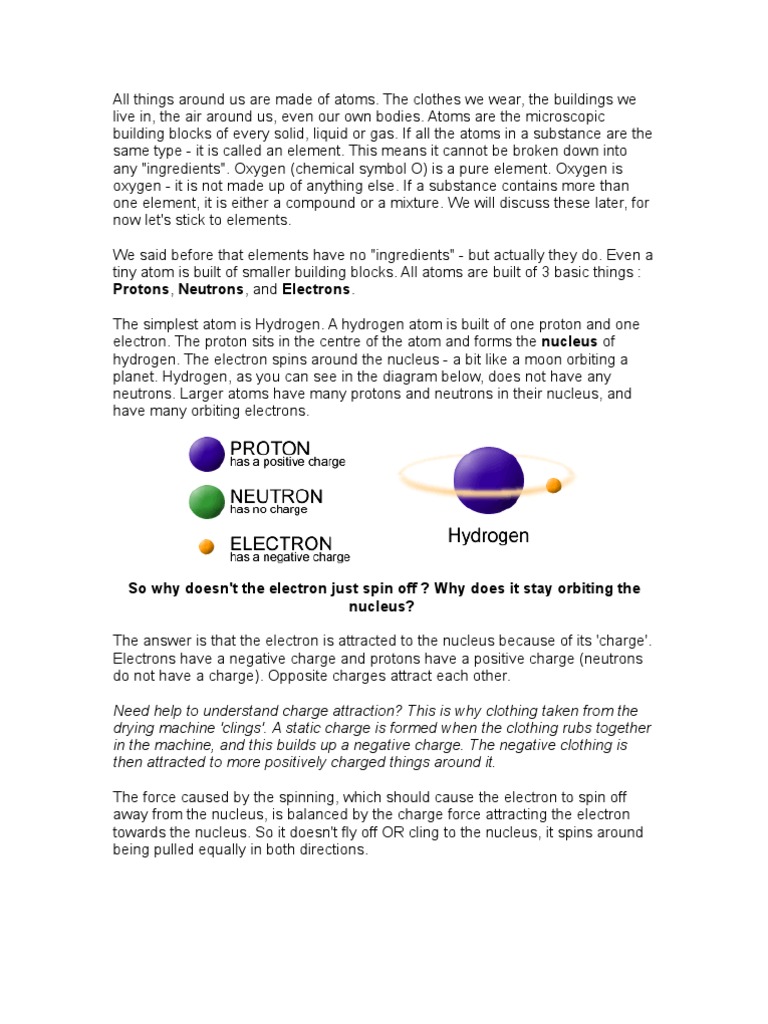Throughout the cosmos, a profound transformation occurs as fleeting particles coalesce into the tapestry of existence. Atoms, the fundamental building blocks of matter, serve as the cornerstone for the creation of everything around us. This exploration of atom formation not only unearths the historical metamorphosis of the universe but also invites us to ponder the intricacies that govern our very reality.
The inception of atoms can be traced back to the primordial moments following the Big Bang, a cataclysmic event that unfolded approximately 13.8 billion years ago. In the aftermath of this immense explosion, the universe was an incandescent sea of energy and elementary particles. Within microcosmic fractions of a second, quarks and gluons emerged, coalescing into protons and neutrons, the core constituents of atomic nuclei. This period, dubbed neutronization, catalyzed the formation of the first atomic nuclei, primarily comprising hydrogen and helium.
As the universe expanded and cooled, a crucial epoch known as recombination occurred approximately 380,000 years post-Big Bang. During this transformative era, electrons, previously detached from protons due to intense thermal energy, began to bind with protons, resulting in the formation of neutral hydrogen atoms. The emergence of these simple atoms marked a seismic shift, leading to the decoupling of matter and radiation, and giving rise to the cosmic microwave background radiation we observe today.
However, the journey of atoms into the diverse and complex matter we encounter in our current reality did not halt at recombination. The formation of stars, galaxies, and subsequently planets solidified the foundation for chemically diverse compounds to flourish. Stars, the quintessential factories of atomic synthesis, ignited in dense regions of hydrogen gas where gravitational forces precipitated nuclear fusion. Through this incessant process, light elements fused to create heavier ones—carbon, oxygen, and beyond—embedding the universes with a rich array of potential for complexity.
The life cycle of stars plays a pivotal role in dispersing these newly formed elements. Massive stars undergo a cataclysmic end known as a supernova, a stellar explosion that expels their outer layers into the interstellar medium. In doing so, they enrich the surrounding gas with heavy elements formed in their cores. This interstellar medium becomes the fertile soil for new generations of stars, planets, and potentially life itself. The process by which these elements mingle and intermingle is a fascinating interplay of cosmic alchemy.
The formation of planets from these remnants of stars engages a second layer of complexity. In a protoplanetary disk—a rotating disk of gas and dust surrounding a young star—atoms and molecules coalesce through a mechanism called accretion. This gradual accumulation ultimately results in planetesimals—small celestial bodies that stir towards larger planetary formations. Thus, the agglomeration of atoms transforms into solidified, complex structures that encompass the terrestrial and gaseous planets we observe in our solar system and beyond.
As planets evolved, so did the atoms that made them up. On Earth, the interplay of elements gave rise to a diverse geological and biological landscape. The ecological evolution and the emergence of life are inextricably linked to atomic interactions. For instance, the primordial soup theory posits that life on Earth originated from organic compounds formed through interactions between elements, prior to signaling complex biochemical assemblages. It’s essential to note the significant role of water, composed of hydrogen and oxygen atoms, as a critical solvent in biological processes.
The periodic table, a systematic representation of elements ordered by atomic structure, showcases the vast tableau of atomic possibilities. The unique properties of atoms, such as electronegativity, atomic radius, and ionization energy, elucidate their propensity to bond and form various compounds. The chemical bonds that result—from ionic and covalent to metallic—are fundamental in creating the myriad forms of matter in our universe.
Moreover, as we delve deeper into atomic theory, we encounter the fascinating concept of isotopes—variants of elements that possess differing neutron counts. The variations in atomic mass influence both stability and decay rates, which have profound implications across various scientific disciplines, from archaeology to nuclear physics. Unraveling the nuances of atomic structures and behaviors not only enhances our comprehension of matter but also revitalizes our curiosity for exploration in both microscopic and cosmic realms.
As we progress into contemporary realms of scientific inquiry, atomic manipulation has transitioned into an era of innovation. Nanotechnology, for instance, harnesses atomic properties to develop novel materials with tailored characteristics. This innovative capability allows for revolutionary advancements in fields ranging from medicine to electronics, culminating in the potential to reshape societal dynamics.
In conclusion, the formation of atoms serves as a gateway to understanding the universe and everything within it. From the explosive beginnings post-Big Bang to the intricate mechanisms governing stellar and planetary formation, the journey of atoms is a testament to the grand narrative of existence. This narrative invites us to contemplate not simply the structure of matter but the very essence of life itself. By fostering curiosity about atomic formation and its transformative power, we grow closer to appreciating the elegance and complexity of everything that surrounds us.












